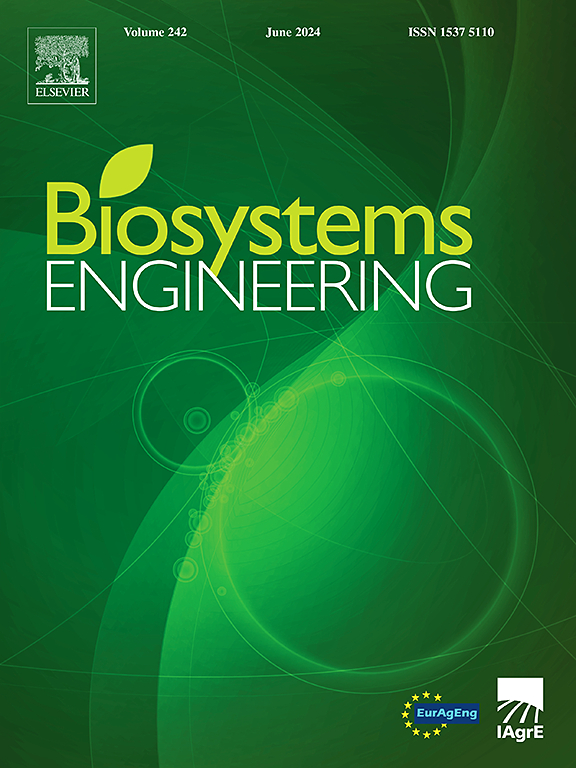Mechanical properties and critical state characteristics of maize root-soil composites at different soil depths
IF 4.4
1区 农林科学
Q1 AGRICULTURAL ENGINEERING
引用次数: 0
Abstract
The complex distribution characteristics of root-soil composites pose challenges in understanding their mechanical behaviour during conservation tillage. This study aims to analyse mechanical parameters of root-soil composites at different soil depths, considering root distribution, and establish an empirical critical state model. Three layers were defined based on root density distribution: Shallow Aggregated Root Zone (SARZ: 0–60 mm), Middle Enriched Root Zone (MERZ: 60–150 mm), and Deep Extended Root Zone (DERZ: 150–210 mm). Triaxial tests revealed varying shear strengths, with MERZ exhibiting the highest and SARZ the lowest. The Duncan-Chang model parameters, initial modulus of deformation, and initial Poisson's ratio were significantly influenced by soil depth, mirroring shear strength trends. An empirical formula incorporating soil layer depth into the Duncan-Chang model was proposed. Critical state stress ratios for SARZ and MERZ were determined as 0.93 and 1.11, respectively, quantifying their relationship with soil depth and root distribution. This study provides theoretical and parameter support for understanding the failure mechanism of root-soil composites.
求助全文
约1分钟内获得全文
求助全文
来源期刊

Biosystems Engineering
农林科学-农业工程
CiteScore
10.60
自引率
7.80%
发文量
239
审稿时长
53 days
期刊介绍:
Biosystems Engineering publishes research in engineering and the physical sciences that represent advances in understanding or modelling of the performance of biological systems for sustainable developments in land use and the environment, agriculture and amenity, bioproduction processes and the food chain. The subject matter of the journal reflects the wide range and interdisciplinary nature of research in engineering for biological systems.
 求助内容:
求助内容: 应助结果提醒方式:
应助结果提醒方式:


